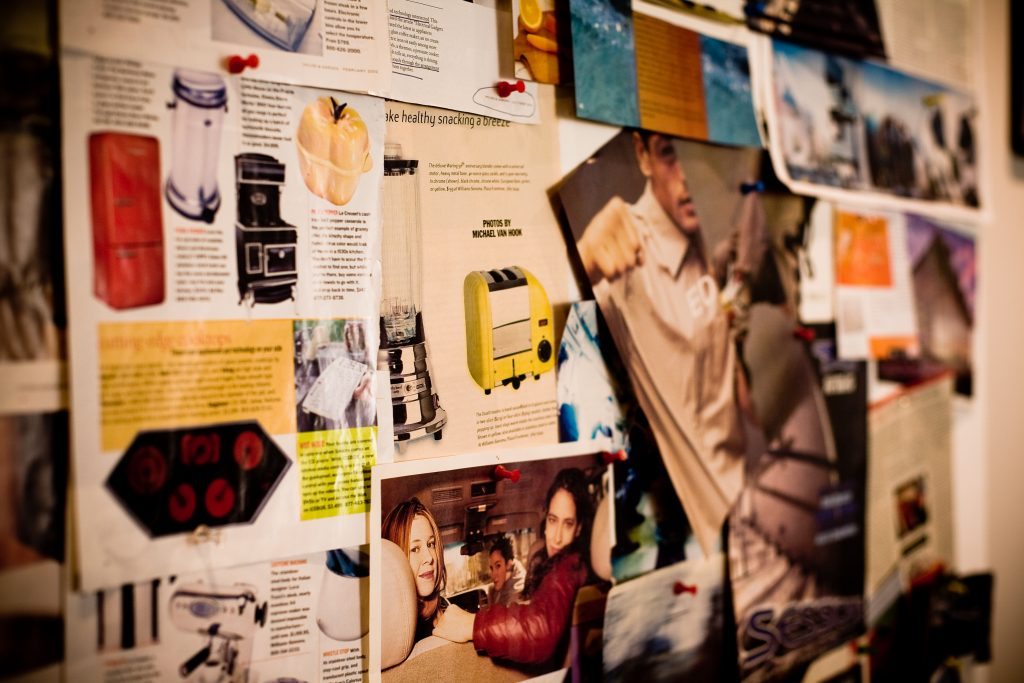By Vicki Matranga
Design Programs Coordinator
Dr. Rutter is a renowned specialist in ergonomic product design and the leading expert in the design of handheld products. He has been profiled by the Wall Street Journal, CNN, and The Chicago Tribune. The Toronto Globe & Mail, Lexus magazine and Metropolis. He been awarded 100+ patents and his company has received 75+ international design excellence awards.

Bryce, what is the most exciting or rewarding part of your work?
Creating exciting designs that people love… They love how the products feel, how they perform, and that the items solve a pain point in a way that makes a day easier and life more enjoyable.
What fuels your inspiration?
I’m inspired by working with people who are innovative, creative and are energized by the opportunity to change the future for the better. Every day I’m exposed to new materials, manufacturing technologies, and change agents that the public will see in two to three years, which is an incredible and inspirational workspace to operate in…. Equally inspiring is to see the potency of great design…. Designs that fit perfectly, perform flawlessly, are beautiful, and are seamless extensions of our mind and body. Designs that make people feel great, that allow all of us to live with dignity, and more fundamentally designs that bring joy to daily living.

In the past few years, what has changed most in your business? How has your company met these challenges in the way you do your work?
One significant change agent in play right now is MOBILE TECHNOLOGY and being ALWAYS ON. But the trap is technology for technology’s sake which can result in products with meaningless features that add noise and confusion to our already busy lives. Especially in healthcare, mobile technology is bringing significant change. We are increasingly taking care of ourselves at home and on the run… We self-test, we monitor our vitals, we record our weight, we measure our exercise and we self-inject. Mobile health is exponentially expanding and will continue to do so over the next decade by offering real-time healthcare. In the immediate future we will see people monitoring their health status using bio-informatic wearables. These devices will automatically report through Wi-Fi to your doctor’s office where a smart app alerts your doctor when you are outside the boundaries of good health, thereby triggering proactive interventions. It’s an exciting and empowering time for consumers!
Why did you choose to speak at the International Home + Housewares Show?
This is an excellent global forum for me to share insights into how housewares manufacturers can tap into the explosive Boomer market with designs that promote dignity and allow people to age in place longer. Boomers represent the largest segment moving into retirement in our history, with unprecedented levels of disposable income, and they are very design aware. As a result, they are demanding a higher caliber of ergonomic design and are placing increasing pressure on manufacturers. They want companies to be less driven by business as usual, with contrived marketing campaigns that push features and functionality that are only extensions of technical prowess, but instead want innovation driven by bona fide “human factors.” It’s the first time in my career when doing something right socially also drives in big business.
Tell us what you will be speaking about and how and this topic is important for Show audiences.
I will show how brands like Nest, Apple, Tesla, Google, Virgin and OXO get it right more often than wrong and create exceptional brand loyalty. And I’ll speak about how this type of design thinking can be applied to housewares products that embrace the needs of Boomers.
Creating Unique & Ownable Consumer Brand Experiences for Boomers
Innovation Theater
Lakeside Center, Room E350
March 6, Sunday, 11:30 am – 12:20 pm
This is your first time presenting at our Theater. What are you looking forward to most from speaking at the Innovation Theater?
I am looking forward to the venue! What I enjoy at these events is opportunity to share my insights and experience so others can see how they can be empowered through great design and at the same time grow revenues and market share with innovative breakthroughs… I will share our how my Synesthetics can be used to create products that connect across all senses in a meaningful and valued way with consumers… A User Centered Innovation Strategy.
What do you see as consumers’ biggest concerns regarding housewares products?
Inclusive Design by far… And by this I mean products that do not discriminate between users… Products that are intuitive and easy to use for all users… young and old… male and female… Those with and without common disease states many experience as we age, such as diabetes, rheumatoid arthritis, dementia and macular degeneration. I don’t see too many housewares brands addressing the unique needs of Boomers. Some get bits and pieces right but no one is getting it right most of the time…. Nobody… So we have this incredible design opportunity to innovate for this Boomer explosion.
What are some of today’s trends or issues that new product development professionals and/or retailers face in the housewares market?
The growing size of our aging population is an inescapable fact… So let me ask you… Are you looking forward to aging and retirement? Do you look forward to using the types of products and living in the facilities that your loved ones are forced to accept as they age? As an industrial designer of medical, mobile and consumer products my mother and father endlessly remind me that just because someone grows old it does not mean that their love for good design erodes. It does not mean that they love their aluminum walker with tennis balls, the hideous reading devices my dad needs as his macular degeneration sets in, or all forms of drug packaging and self-medication devices they need to use daily. Instead, everything about these products continuously reminds them that they are aging, they need help and the broadcast this message to everyone who sees them, and most tragically erodes their sense of dignity on a daily basis.
As we continue to make incredible advances in medicine, in far too many cases the state-of-the-art in design being delivered to aging consumers overshadows the fundamental principle that drives good humanistic design; they ignore the importance the human factor. All the technology in the world cannot save a product that is hard to use, confusing, tiring and that grinds away one’s independence. The lack of empathetic design solutions for an aging population is nothing short of appalling.
There is a tsunami of need, like never before. One fifth of our population is 45 to 65 years old. The number of people 85 years old will increase from 6 million to 20 million in the next two decades. And 10,000 people a day will turn 65 years old for the next two decades. On top of these significant changes in the demographics of our society people entering retirement are doing so with the highest levels of disposable income in history and greatest awareness of what constitutes good design. Their bar is significantly higher and they have a low tolerance for lousy products. So what do we do to seize this momentous opportunity?
To be the best of the best you need thoughtful design solutions that look great, fit perfectly, perform flawlessly that make an emotional connection between the brand and its consumers. How a product feels, looks and sounds, combined with intuitive usability and performance excellence defines the DNA of your brand experience. Building on industry-wide best practices over the past two decades working with elite global brands my company, Metaphase, has created and refined its User Centered Innovation Strategy to consistently deliver unique and ownable consumer brand experiences and successful products that sell and drive revenues – a process referred to by The Wall Street Journal as “…a gold standard plan.”
Thank you, Bryce, for explaining how everyone is affected by these issues in life. No matter what our age, we have all used a clumsy personal care product or frustrating household device. As we face complex social and medical care trends, I know that your presentation, informed by your personal and professional experience, will impress and move the audience. Don’t miss Bryce Rutter’s presentation in the Innovation Theater on Sunday, March 6 at 11:30 am.
Learn more about the work at Metaphase by contacting:
Bryce G. Rutter, Ph.D.
Founder & CEO
Metaphase Design Group, Inc.
20 South Sarah Street
St. Louis, MO 63108
bryce@metaphase.com
314.721.0700, ext 123
www.metaphase.com
The four days of the 2016 International Home + Housewares Show will be packed with events and education. Gain cutting-edge insights that you can apply to your work. To help you plan your valuable time at the Show we introduce the speakers and the 21 topics that will be presented in the Innovation Theater in the Lakeside Center. All programs are audio-recorded and will be available on www.housewares.org after the Show.



